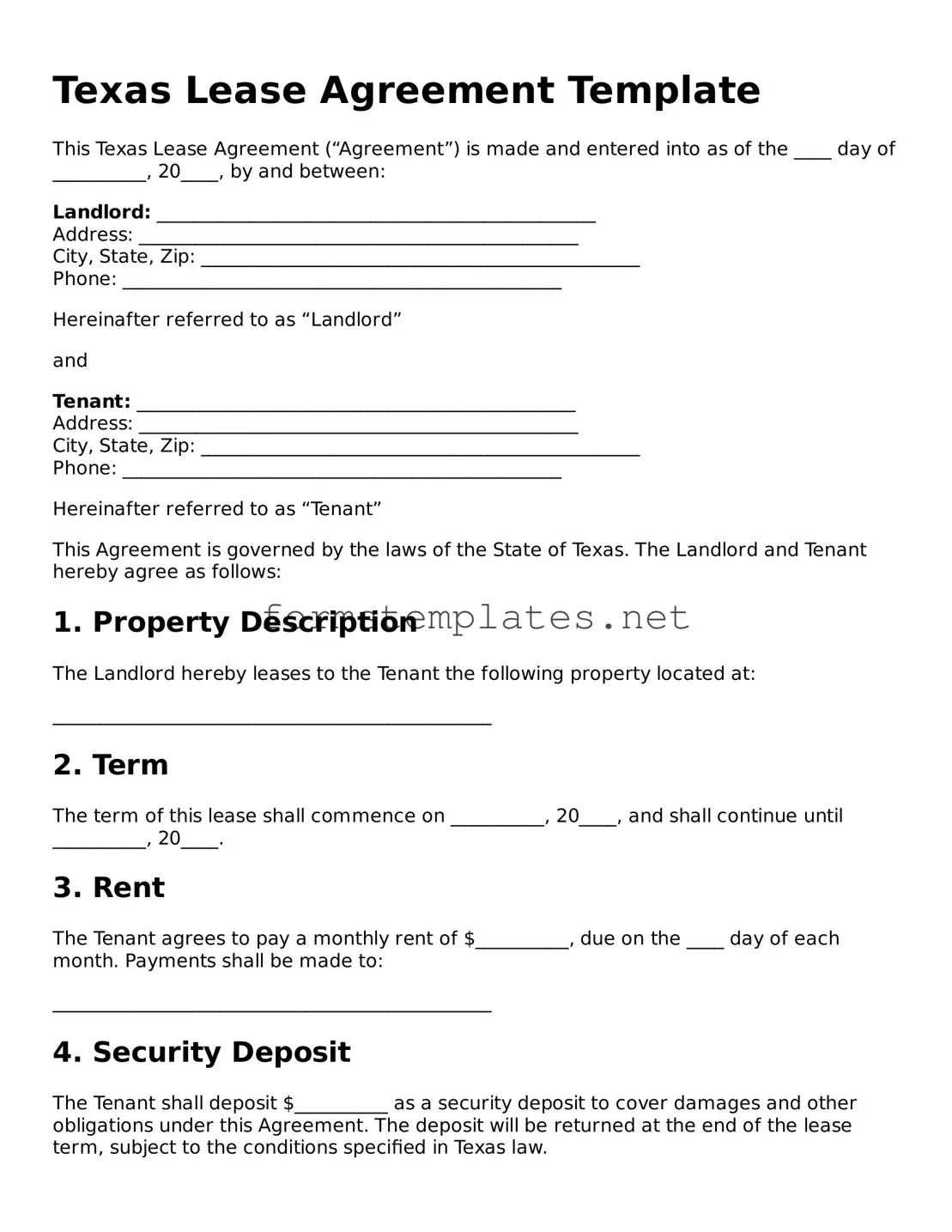Texas Lease Agreement Template
This Texas Lease Agreement (“Agreement”) is made and entered into as of the ____ day of __________, 20____, by and between:
Landlord: _______________________________________________
Address: _______________________________________________
City, State, Zip: _______________________________________________
Phone: _______________________________________________
Hereinafter referred to as “Landlord”
and
Tenant: _______________________________________________
Address: _______________________________________________
City, State, Zip: _______________________________________________
Phone: _______________________________________________
Hereinafter referred to as “Tenant”
This Agreement is governed by the laws of the State of Texas. The Landlord and Tenant hereby agree as follows:
1. Property Description
The Landlord hereby leases to the Tenant the following property located at:
_______________________________________________
2. Term
The term of this lease shall commence on __________, 20____, and shall continue until __________, 20____.
3. Rent
The Tenant agrees to pay a monthly rent of $__________, due on the ____ day of each month. Payments shall be made to:
_______________________________________________
4. Security Deposit
The Tenant shall deposit $__________ as a security deposit to cover damages and other obligations under this Agreement. The deposit will be returned at the end of the lease term, subject to the conditions specified in Texas law.
5. Utilities
The Tenant shall be responsible for the following utilities:
- Electricity
- Water
- Gas
- Internet/Cable
6. Maintenance and Repairs
The Tenant agrees to maintain the property in good condition and return it to the Landlord at the end of the lease period. Any repairs required due to damage beyond normal wear and tear will be the responsibility of the Tenant.
7. Termination
This Agreement may be terminated by either party with a written notice of ____ days to the other party prior to termination.
8. Governing Law
This Agreement shall be governed by the laws of the State of Texas. Any disputes arising from this Agreement shall be resolved in accordance with Texas law.
IN WITNESS WHEREOF, the parties hereto have executed this Lease Agreement as of the day and year first above written.
______________________________
Landlord Signature
______________________________
Tenant Signature
Date: _______________
